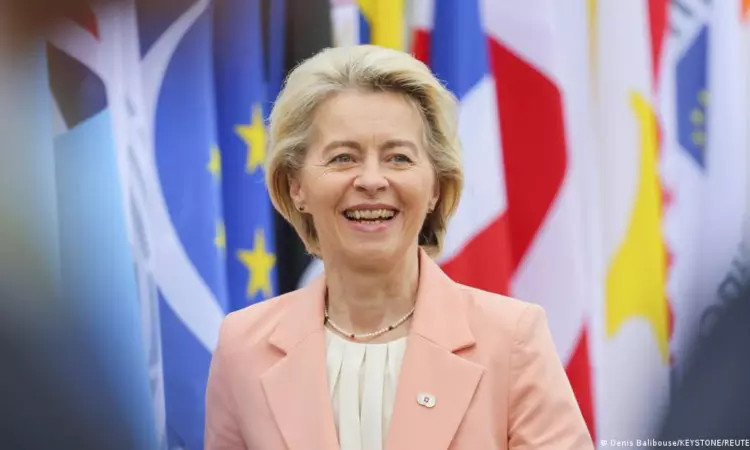Who will get the EU's top jobs?
The three party groups in the political center command a total of 406 seats in the European Parliament, meaning they have more than the 361 seats required for an absolute majority.

Bernd Riegert
On Monday, heads of state and government of the 27 EU member states still had not agreed upon who should lead key EU institutions following last week’s European parliamentary elections. That said, it does look likely that the President of the EU Commission Ursula von der Leyen will secure a second five-year term of office. Her center-right party group, the European People’s Party (EPP), continues to hold most seats in the newly constituted European Parliament. German Chancellor Olaf Scholz left little doubt the 27 EU member states would nominate von der Leyen for this powerful position, following which he believed she would surely find support from the three main political groups leading the European Parliament — the Christian Democrats, the Social Democrats and the liberal Renew Europe group. “I believe it will be possible to quickly reach a reasonable solution, thanks to the fact that the political platform that has supported the president so far once again holds a majority in parliament,” Scholz said in Brussels.
The three party groups in the political center command a total of 406 seats in the European Parliament, meaning they have more than the 361 seats required for an absolute majority. In terms of numbers, von der Leyen does not require support from Europe’s growing right-wing populist and far-right camp. Ahead of the European parliamentary elections, von der Leyen had not ruled out working with right-wing nationalist MEPs, provided they held a pro-Ukrainian and pro-European stance.
This Monday, all 27 leaders “put their cards on the table” at an informal dinner at the European Council building in Brussels, according to EU diplomats. News soon emerged that Portugal’s former prime minister Antonio Costa was expected to become the next head of the European Council. Costa, a center-left Socialist, represents the bloc’s southern countries.
Estonia’s liberal Prime Minister Kaja Kallas, meanwhile, could become the new EU foreign policy chief, representing the bloc’s eastern member states. Christian Democratic Roberta Metsola, who currently serves as President of the European Parliament, could remain in office for another two-and-a-half years, representing smaller southern states in the EU.
The delicate balance between parliamentary party families and candidates’ geographical backgrounds will also be taken into consideration when selecting the new NATO Secretary-General. Outgoing Dutch Prime Minister Mark Rutte is expected to secure this position in the fall as a representive of northern member states, provided Hungary and Romania can be persuaded to back him. Any decision on the matter must be reached unanimously.
While talks are ongoing over who will become the next European Parliament president, it is the legislative body that selects its own president by absolute majority. But as always, all political decisions within the EU are interconnected. Only when all candidates for the four top jobs have been selected will an announcement be made.
French President Macron, who played an instrumental role in installing von der Leyen as president of the EU Commission president five years ago, has taken a back seat this time. This is because the European Central Bank in Frankfurt am Main is headed by Frenchwoman Christine Lagarde and her term does not end until 2027. Macron, however, is seeking promises that that the new EU Commission will be more committed to common EU debt and loosen financial rules in return for agreeing to the new EU leadership, Italian media report.



